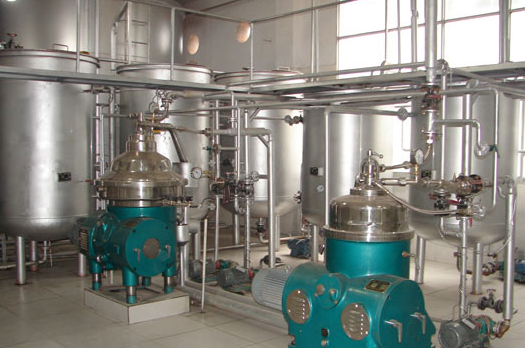1. Purpose and requirements of walnut oil degumming
The gum in walnut oil mainly refers to phospholipids, so "degumming" is also called "dephosphorization". Other colloids include protein and its decomposition products, mucus, and coordination compounds and salts formed by colloid and a variety of trace metals.
The presence of colloids, especially the presence of non-hydratable phospholipids, not only affects the quality and storage stability of the refined oil, but also affects the subsequent refining equipment procedures and the deep processing of oil equipment.
Unclean degumming will produce oil and water emulsification in the deacidification process, increasing the refining cost and the amount of alkali used.
Unclean degumming affects the effect of adsorption and decolorization, increases the amount of decolorizing agent and fuel consumption, and makes filtration difficult.
Unclean degumming has a greater impact on the deodorization (physical refining) effect, which increases the peroxide value of the deodorized oil, deteriorates the stability, and produces color reversion and off-flavor.

2. The degumming methods of walnut oil refining equipment are as follows according to the principle of degumming:
(1) Hydration and degumming method: mainly to remove hydrated phospholipids, this method is often used before deacidification when the phospholipid content is high or needs to be used as a by-product;
(2) Acid-regulated and graded degumming method: It is divided into simple acid degumming and dry degumming and decolorization. When it is required to reach the minus 6th power of phospholipid content<(5-10)X10 (required for physical refining), acid refining degumming can also remove non-hydratable phospholipids, but the resulting oily foot has a deep color and is generally not suitable for use Preparation of edible phospholipids;
(3) "Silica gel body" adsorption method degumming
(4) Phospholipase hydrolysis degumming uses the action of phospholipase to convert non-hydratable phospholipids into hydrated phospholipids to completely dephosphorize.
(5) Membrane filtration degumming method (UF method) has many names according to the degumming process, such as special degumming, dry degumming, super degumming, anhydrous acetic acid method, and silicon degumming.
Copyright © Henan Zhongxing Grain And Oil Machinery Co.,Ltd. All Rights Reserved. Powered by MetInfo